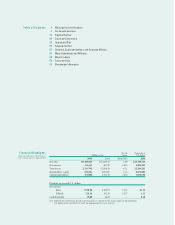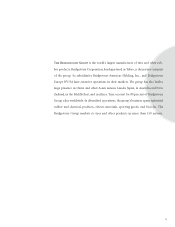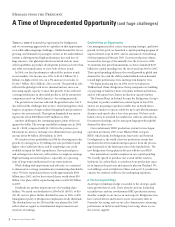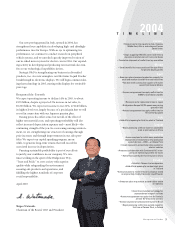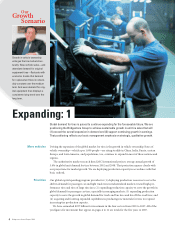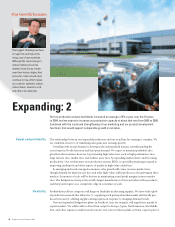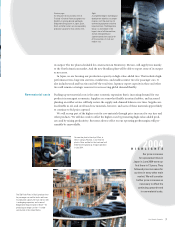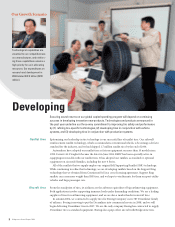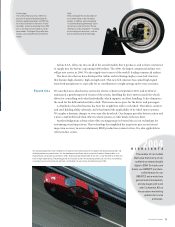Bridgestone 2004 Annual Report Download - page 9
Download and view the complete annual report
Please find page 9 of the 2004 Bridgestone annual report below. You can navigate through the pages in the report by either clicking on the pages listed below, or by using the keyword search tool below to find specific information within the annual report.
7
Our Growth Scenario
Raw material costs
its output. The tire plant scheduled for construction in Monterrey, Mexico, will supply tires mainly
to the North American market. And the new Brazilian plant will be able to export some of its output
as necessary.
In Japan, we are focusing our production capacity on high-value-added tires. That includes high-
performance tires, large rim size tires, runflat tires, and studless winter tires for passenger cars. It
also includes truck and bus tires and off-the-road tires. Japanese export capacity in these and other
tires will remain a strategic resource for us in serving global demand flexibly.
Pushing up raw material costs is the same economic expansion that is increasing demand for our
products in emergent economies. Supplies are somewhat flexible in natural rubber, and increased
planting on rubber estates will help restore the supply-and-demand balance over time. Supplies are
less flexible in oil- and steel-based raw materials, however, and users of those materials appear likely
to continue to bid prices upward.
We will recoup part of the higher costs for raw materials through price increases for our tires and
other products. We will also work to offset the higher costs by promoting high-value-added prod-
ucts and by raising productivity. But some adverse effect on our operating profit margins will pre-
sumably be unavoidable.
Previous page:
Our new plant for truck and bus tires in
Thailand’s Chonburi Province augments our
flexibility in serving demand worldwide.
Bridgestone Group plants in Japan, Spain,
Brazil, and other nations are also expanding
production capacity for truck and bus tires.
Our price increases
for replacement tires in
Japan in June 2004 were our
first there in 13 years. They
followed price increases for
our tires in every other main
market. We will consider
further price increases as
necessary to offset the
continuing upward trend
in raw material costs.
2004
HIGHLIGHTS
Right:
A competitive edge in technological
development underlies our compet-
itiveness in off-the-road tires for
earthmoving equipment and other
large machinery. The Bridgestone
Group is a world leader in the
largest sizes of off-the-road tires,
and we are expanding our
Japanese production capacity for
off-the-road tires of small and
medium size.
The São Paulo Plant, in Brazil, produces tires
for passenger cars and for trucks and buses.
Its production capacity for truck and bus tires
is undergoing expansion, and a second
Bridgestone Group tire plant in Brazil—for
producing passenger car tires—is under
construction in the state of Bahia.
Our new tire plant in the city of Wuxi, in
China’s Jiangsu Province, is our third tire
plant in China and the first that we have built
there from the ground up. It began operation
in July 2004.


